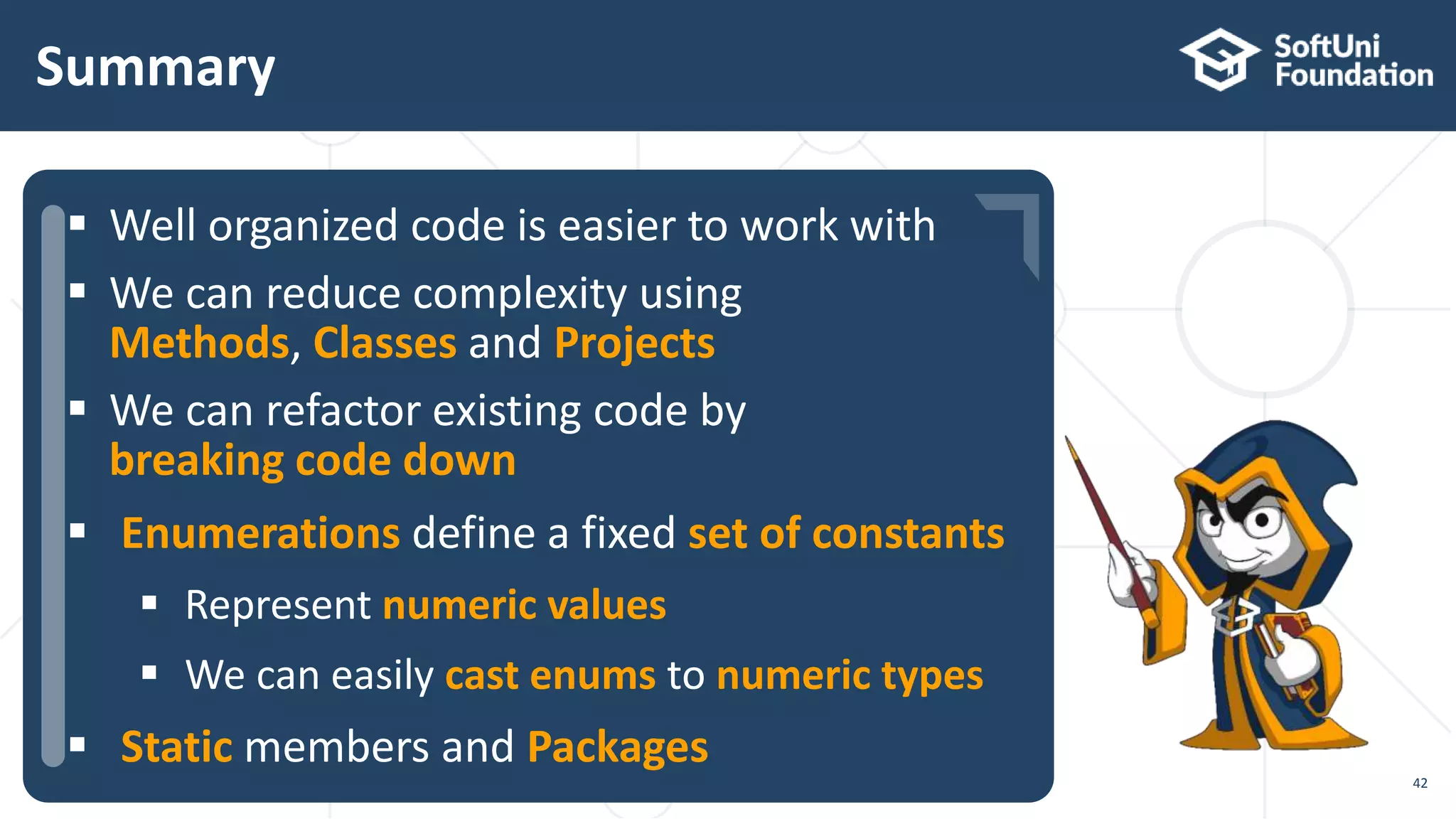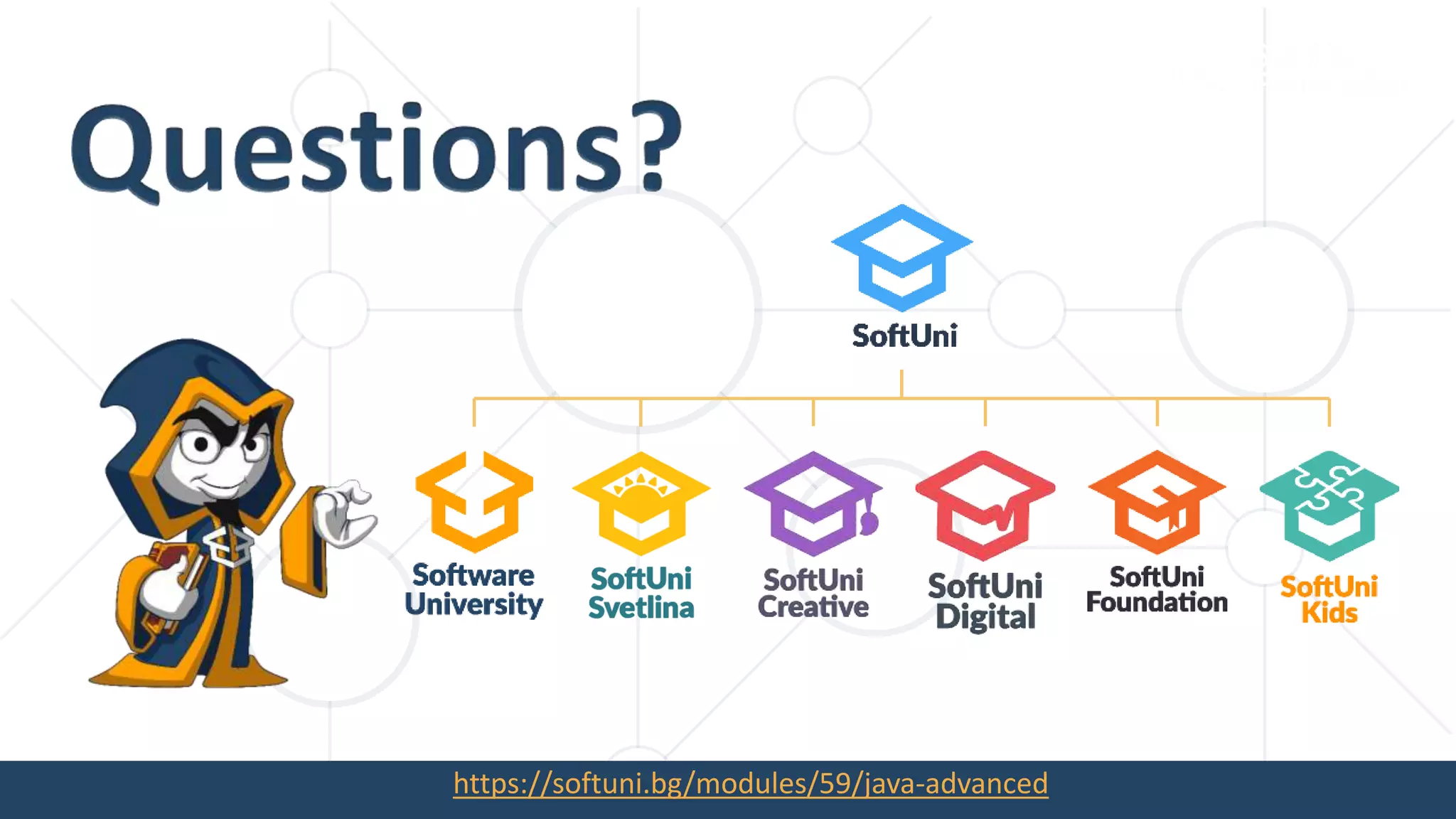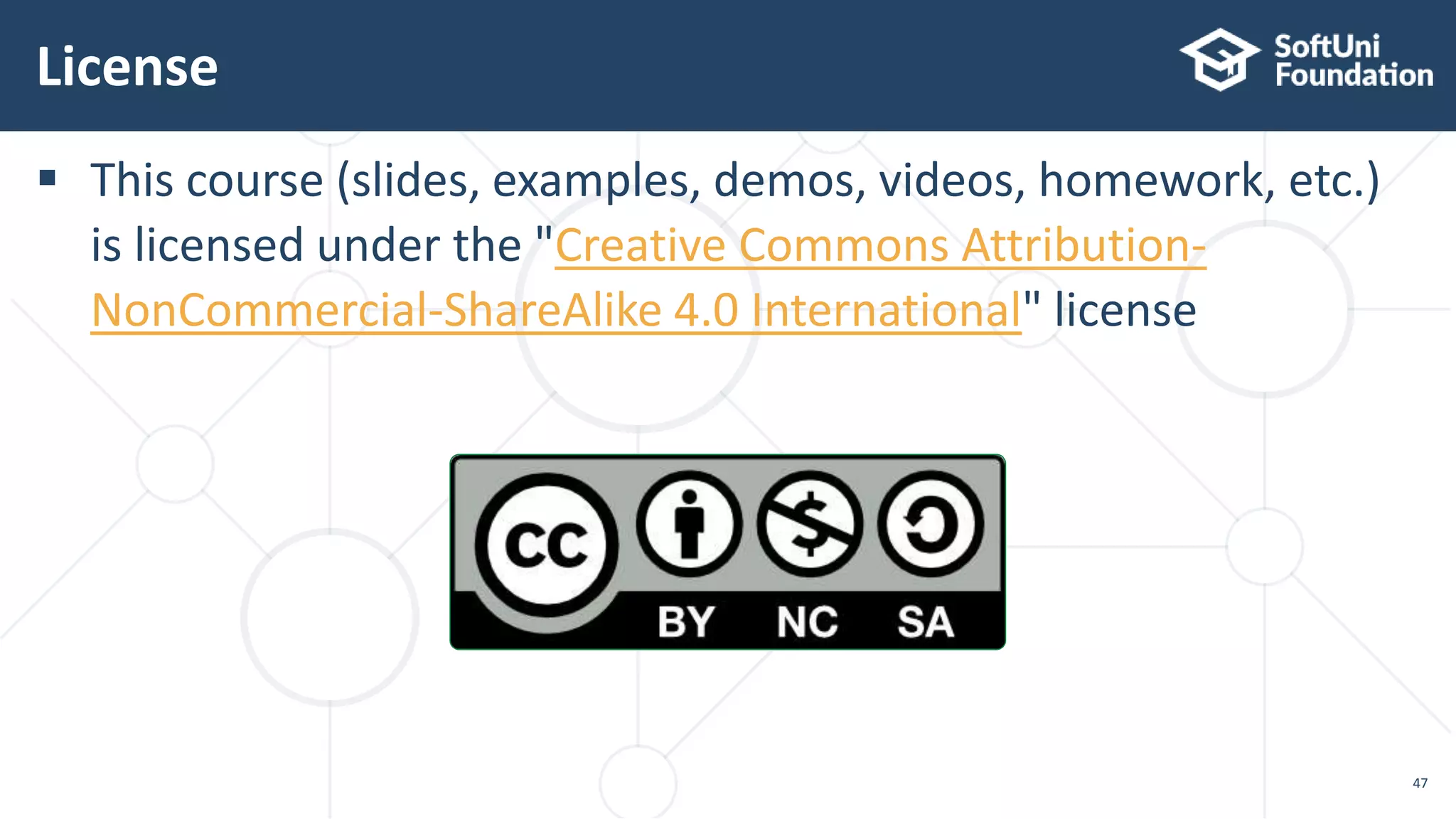The document discusses various concepts related to abstraction in software development including project architecture, code refactoring, enumerations, and the static keyword in Java. It describes how to split code into logical parts using methods and classes to improve readability, reuse code, and avoid repetition. Refactoring techniques like extracting methods and classes are presented to restructure code without changing behavior. Enumerations are covered as a way to represent numeric values from a fixed set as text. The static keyword is explained for use with classes, variables, methods, and blocks to belong to the class rather than object instances.
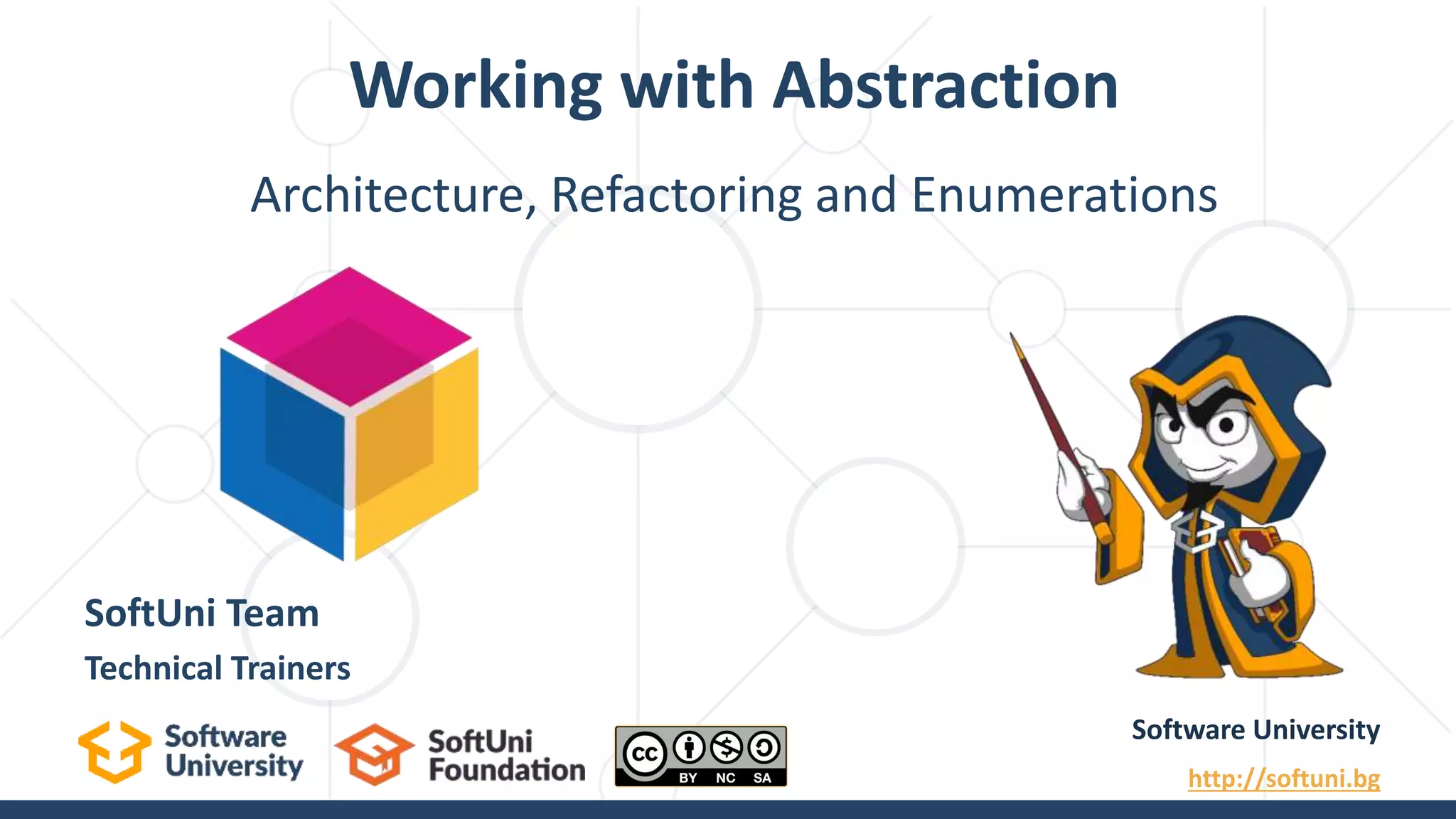
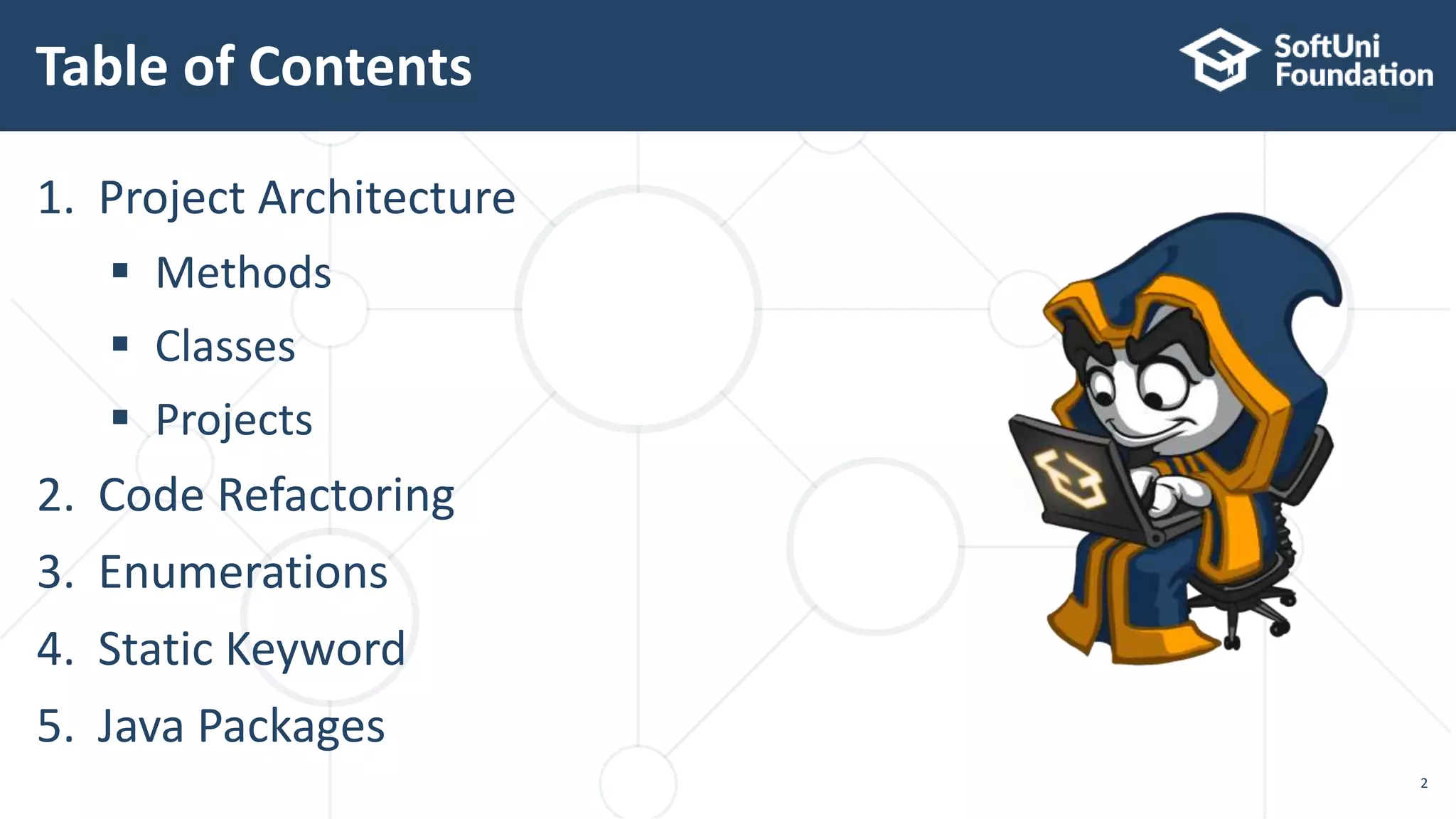


![ We use methods to split code into functional blocks Improves code readability Allows for easier debugging Splitting Code into Methods (1) 5 for (char move : moves){ for (int r = 0; r < room.length; r++) for (int c = 0; c < room[r].length; c++) if (room[row][col] == 'b') … } for (char move : moves) { moveEnemies(); killerCheck(); movePlayer(move); }](https://image.slidesharecdn.com/01-200321145056/75/20-1-Java-working-with-abstraction-5-2048.jpg)
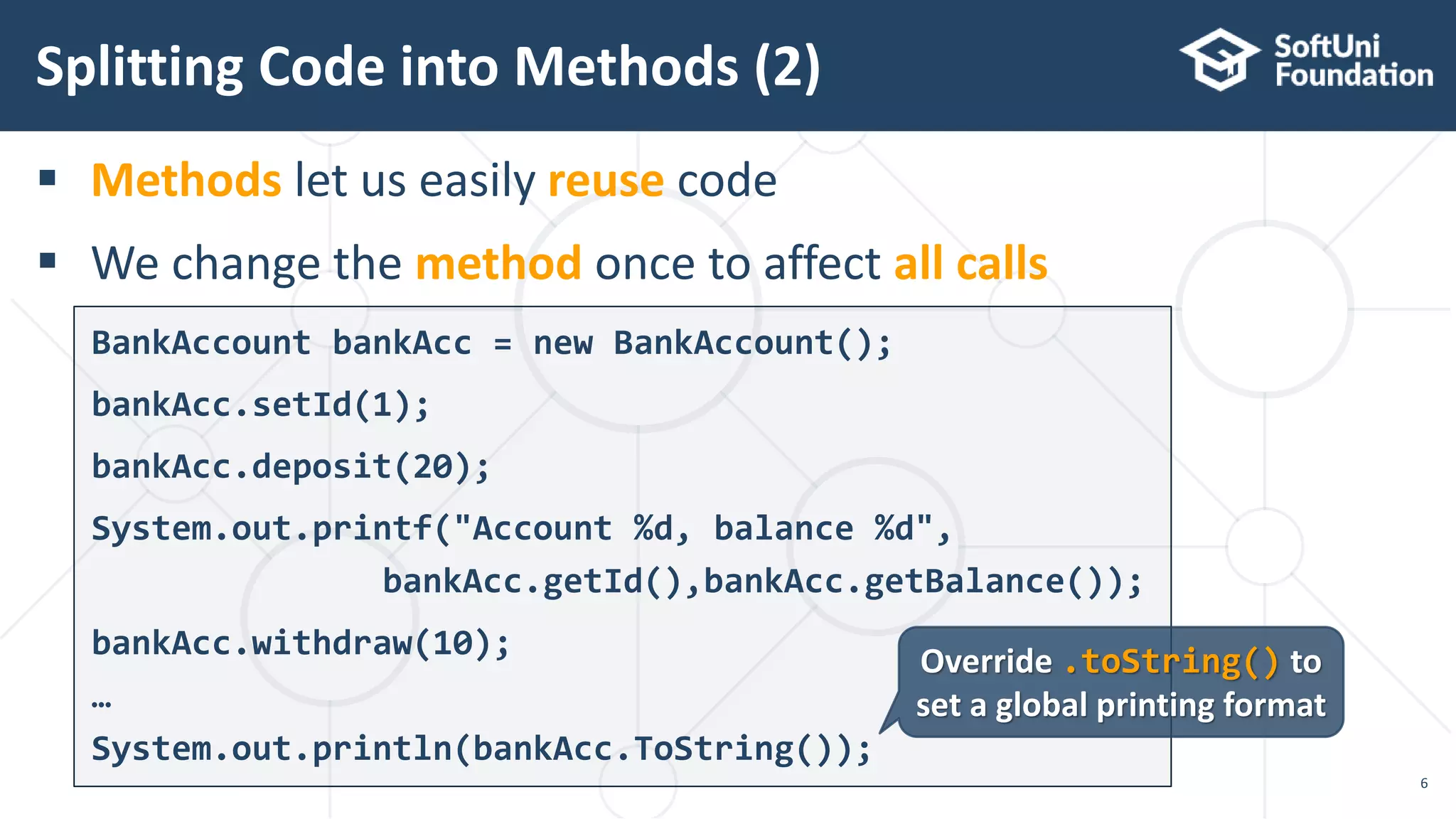
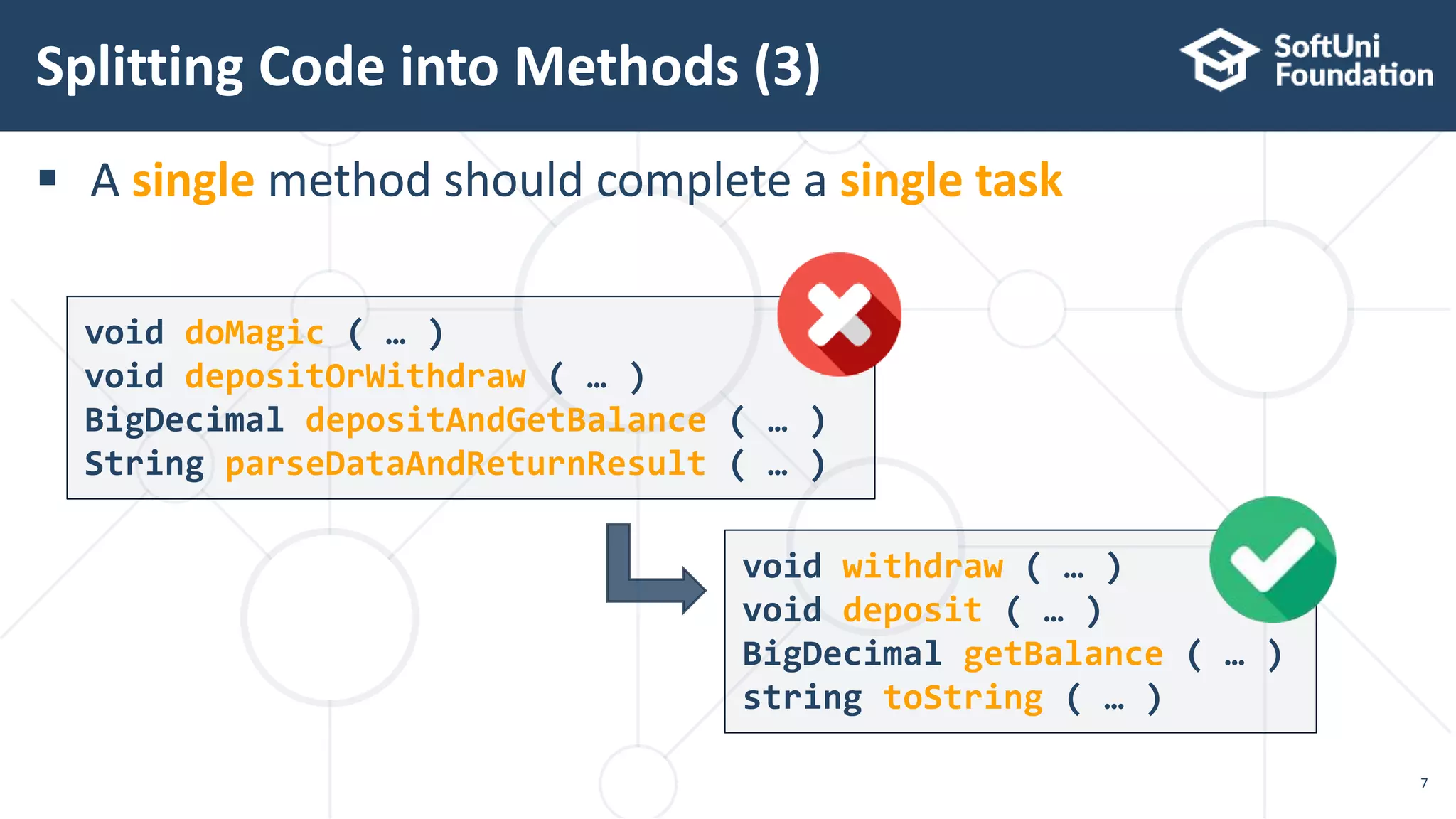

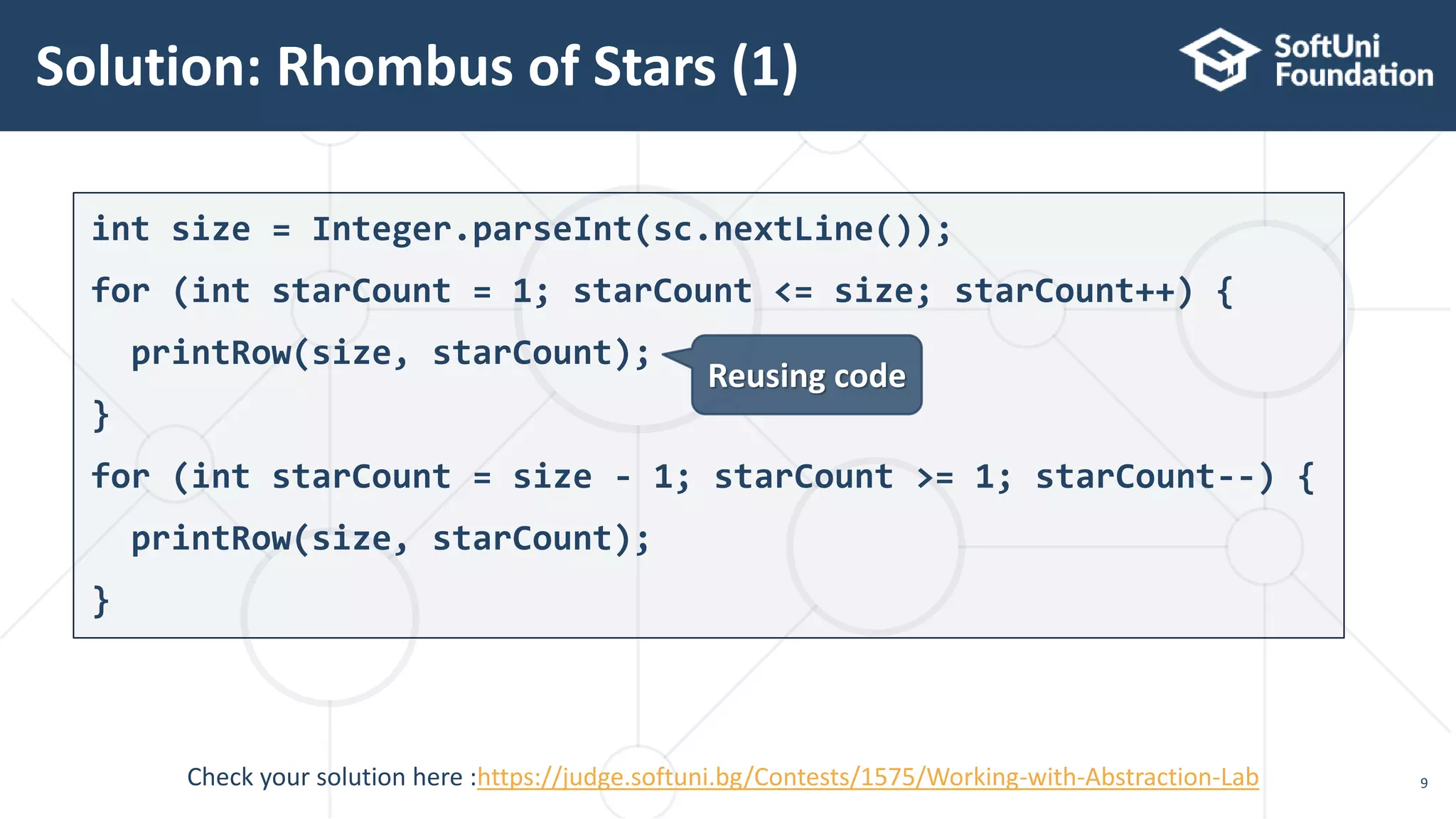
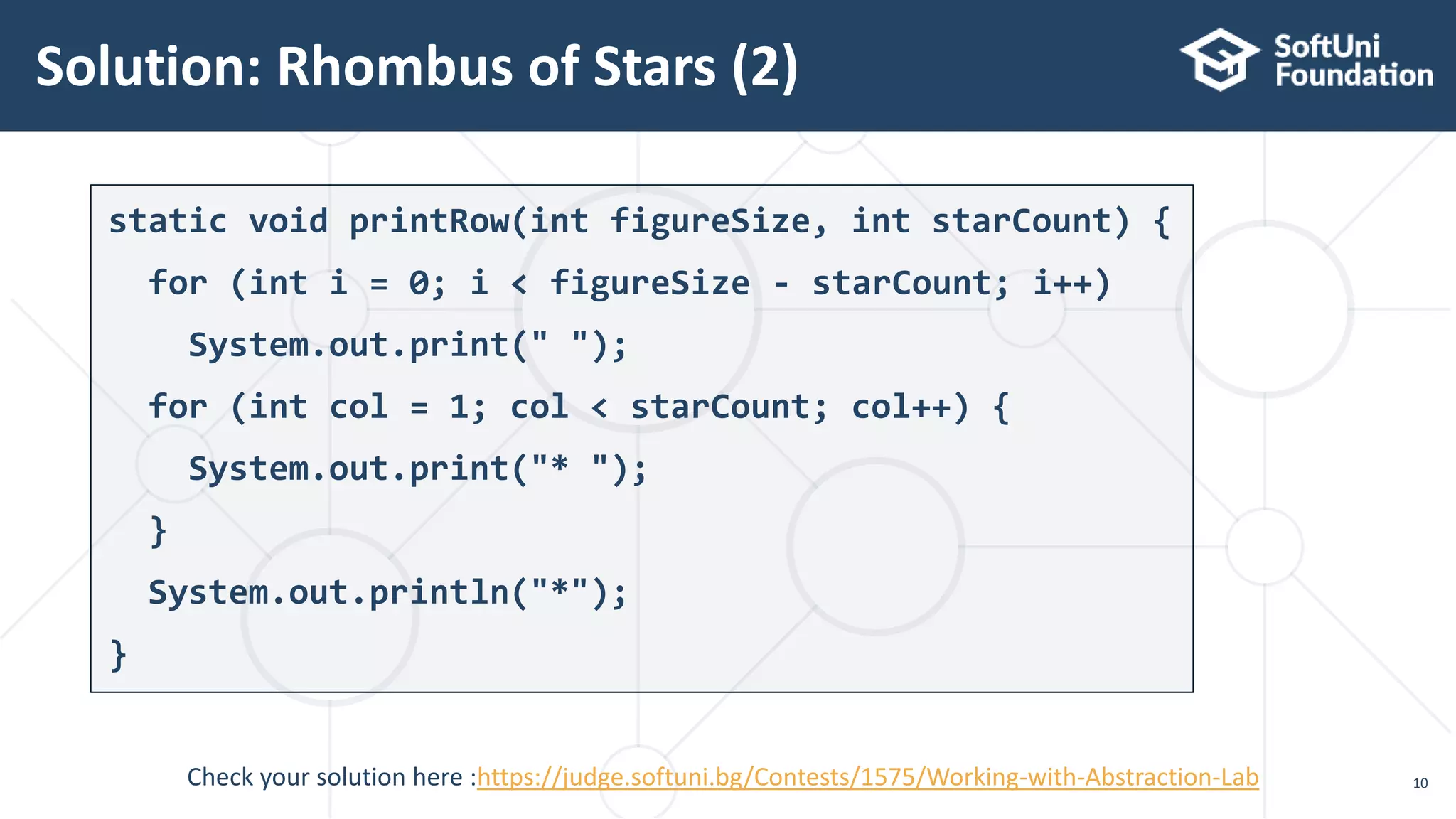
![Splitting Code into Classes (1) Just like methods, classes should not know or do too much 11 GodMode master = new GodMode(); int[] numbers = master.parseAny(input); ... int[] numbers2 = master.copyAny(numbers); master.printToConsole(master.getDate()); master.printToConsole(numbers);](https://image.slidesharecdn.com/01-200321145056/75/20-1-Java-working-with-abstraction-11-2048.jpg)
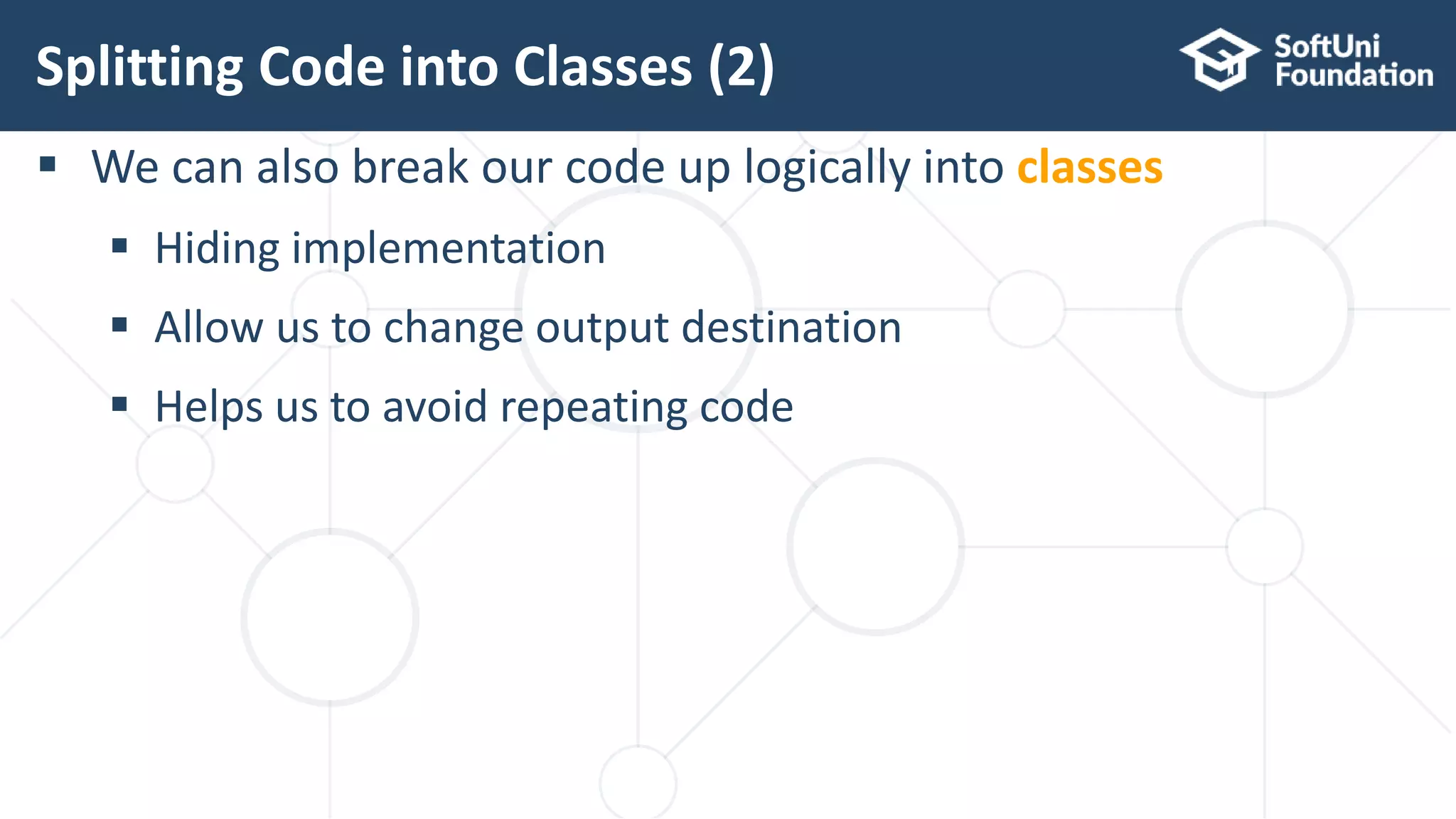
![Splitting Code into Classes (3) 13 List<Integer> input = Arrays.stream( sc.nextLine().split(" ")) .map(Integer::parseInt) .collect(Collectors.toList()); ... String result = input.stream() .map(String::valueOf) .collect(Collectors.joining(", ")); System.out.println(result); ArrayParser parser = new ArrayParser(); OuputWriter printer = new OuputWriter(); int[] numbers = parser.integersParse(args); int[] coordinates = parser.integerParse(args1); printer.printToConsole(numbers);](https://image.slidesharecdn.com/01-200321145056/75/20-1-Java-working-with-abstraction-13-2048.jpg)
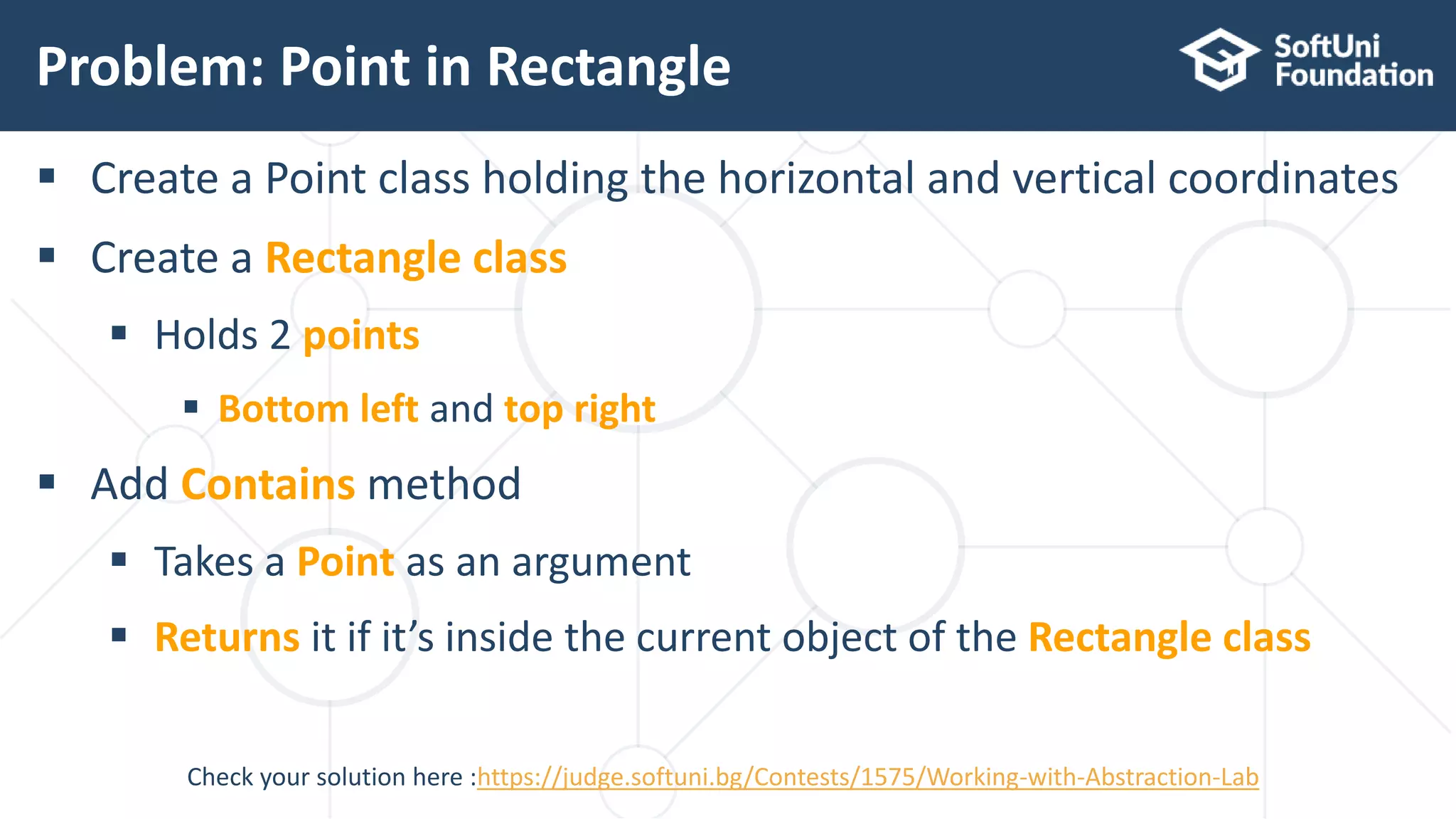
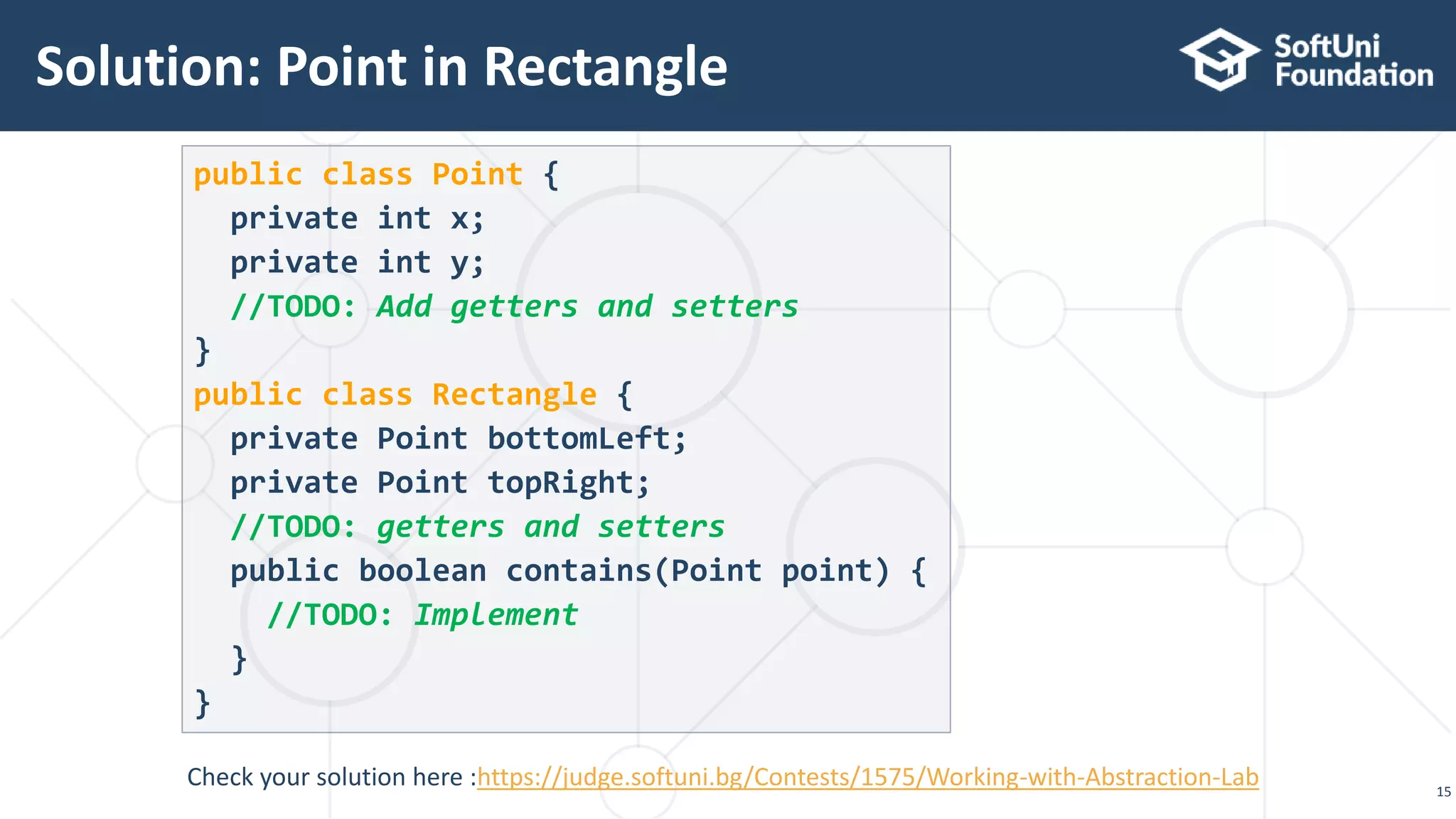
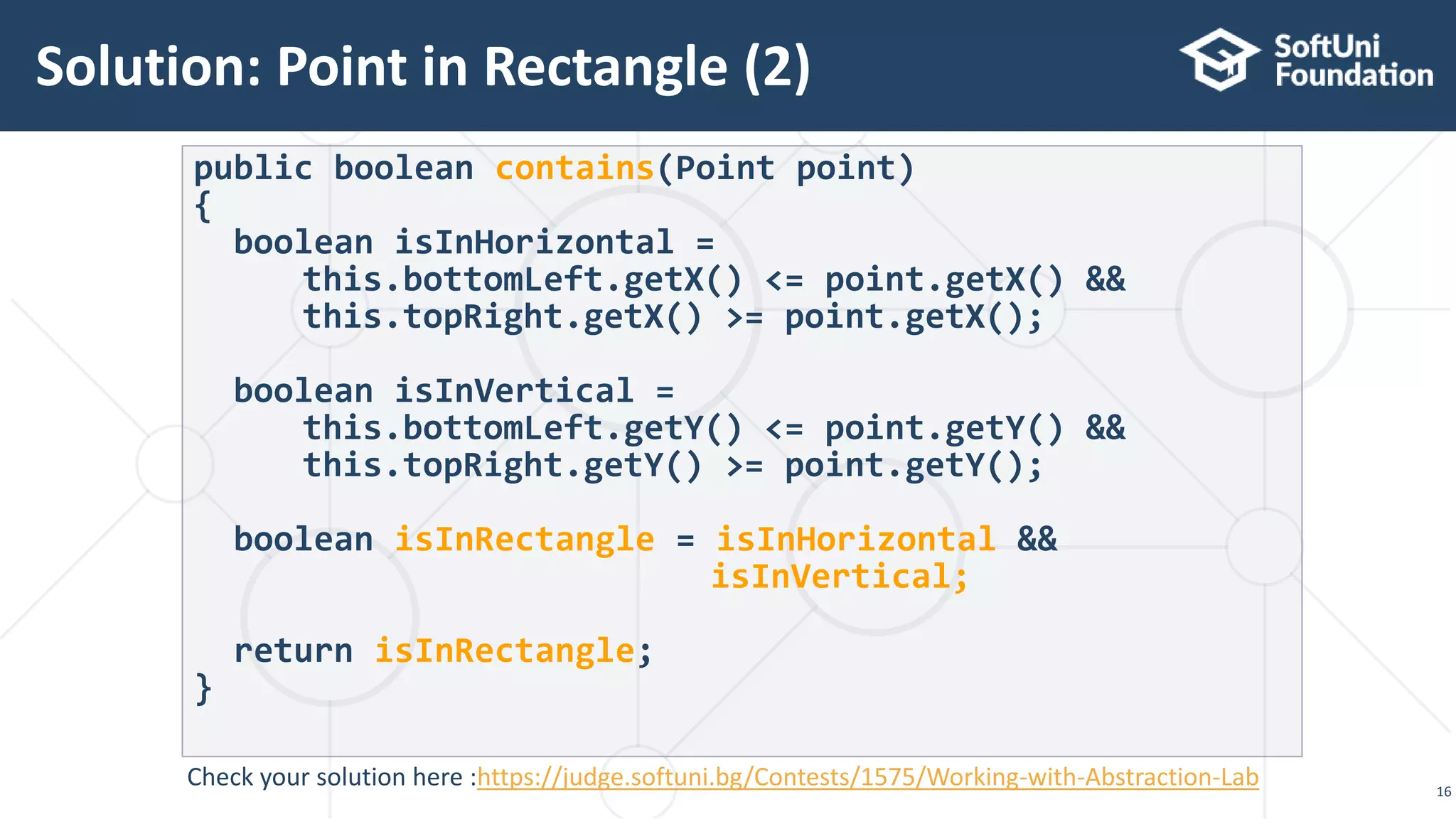

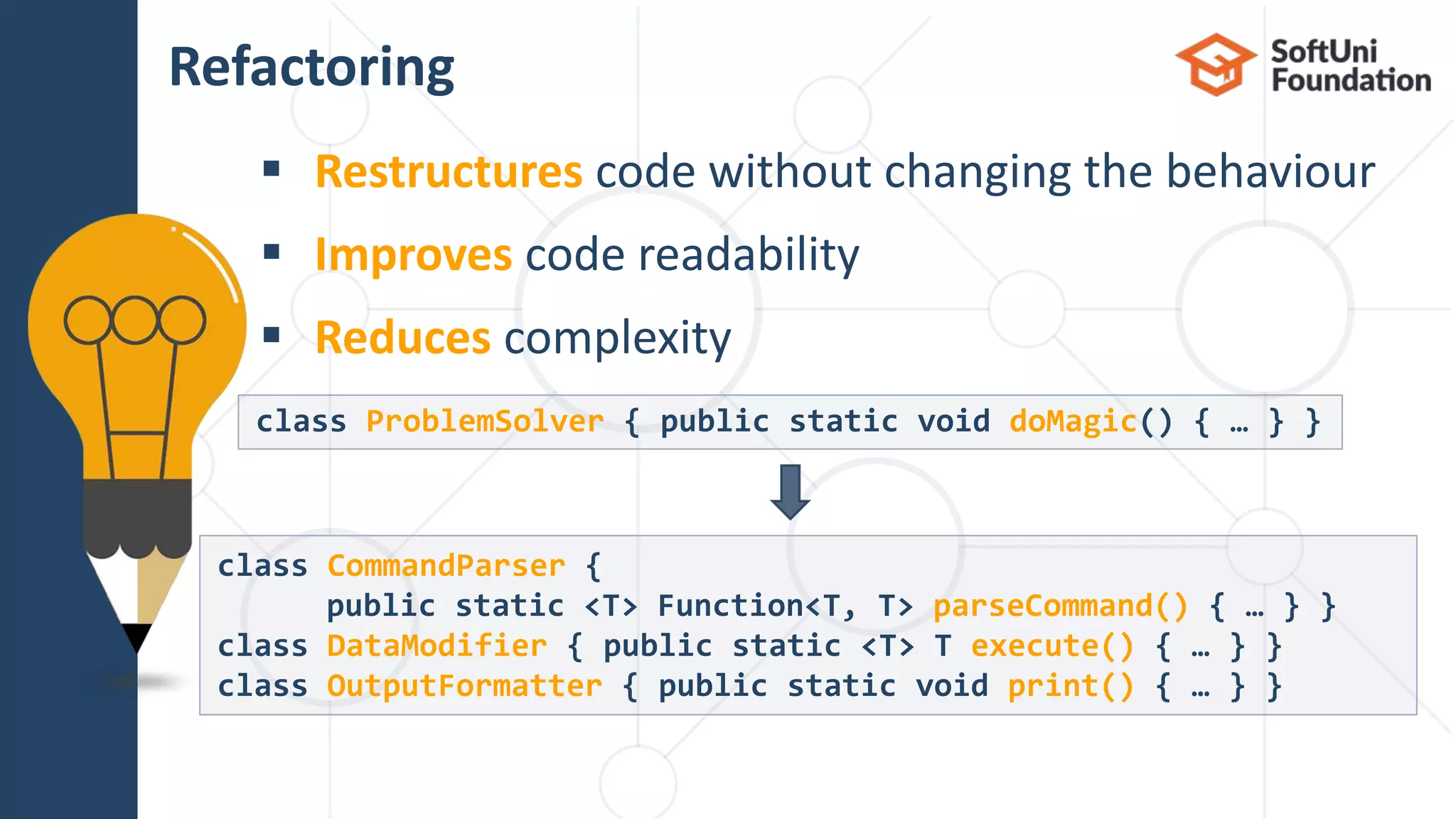

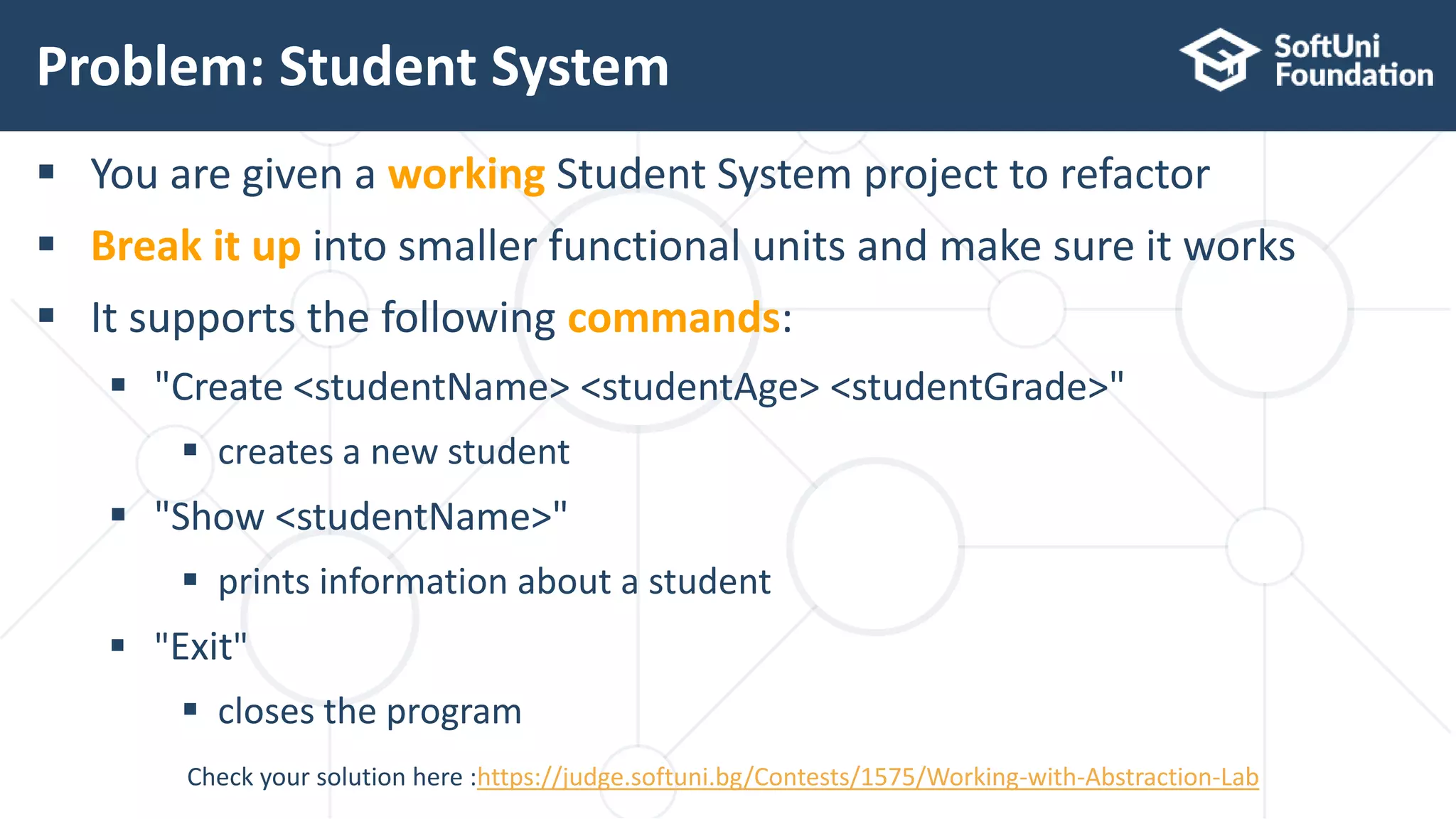
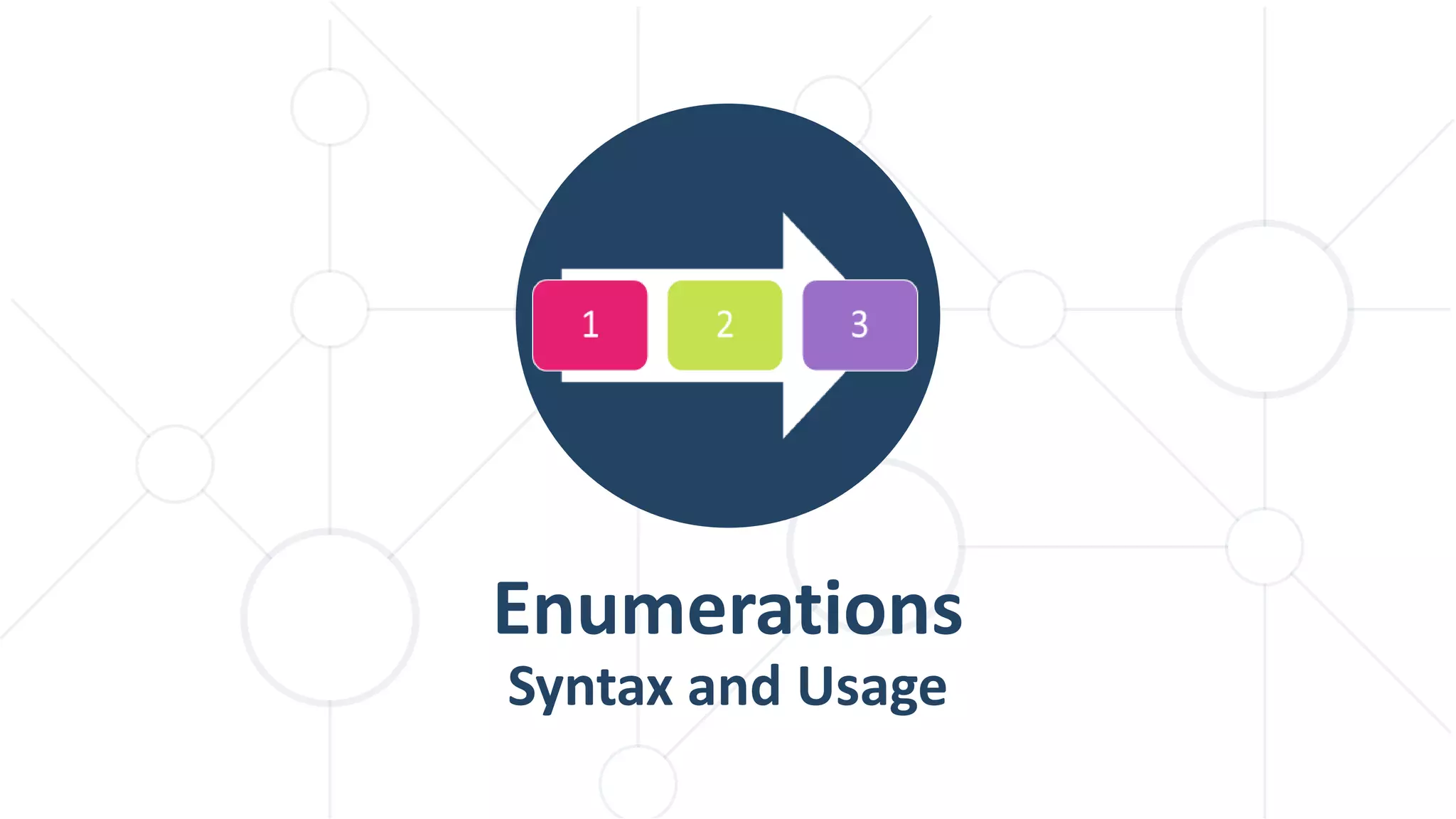


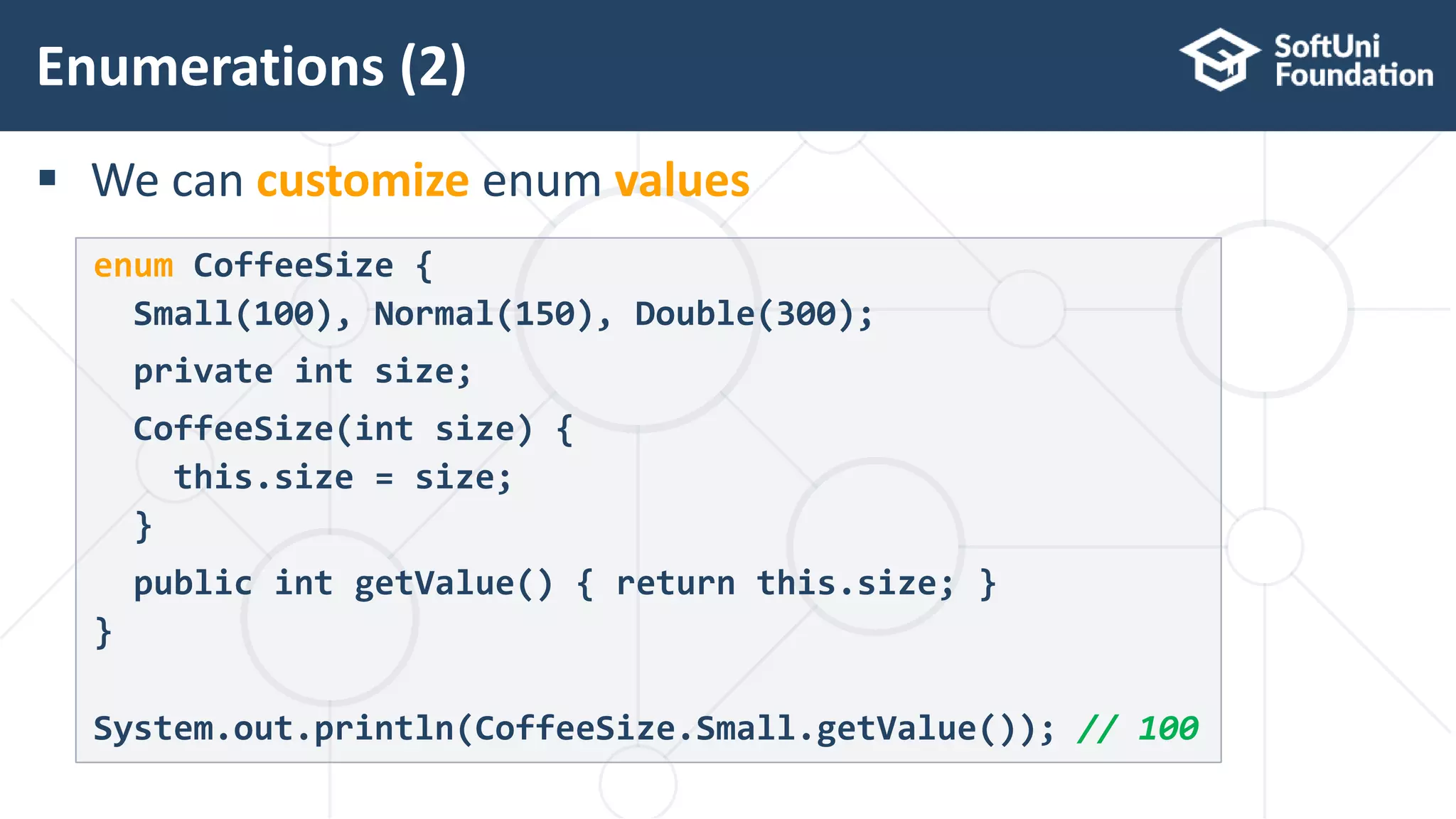
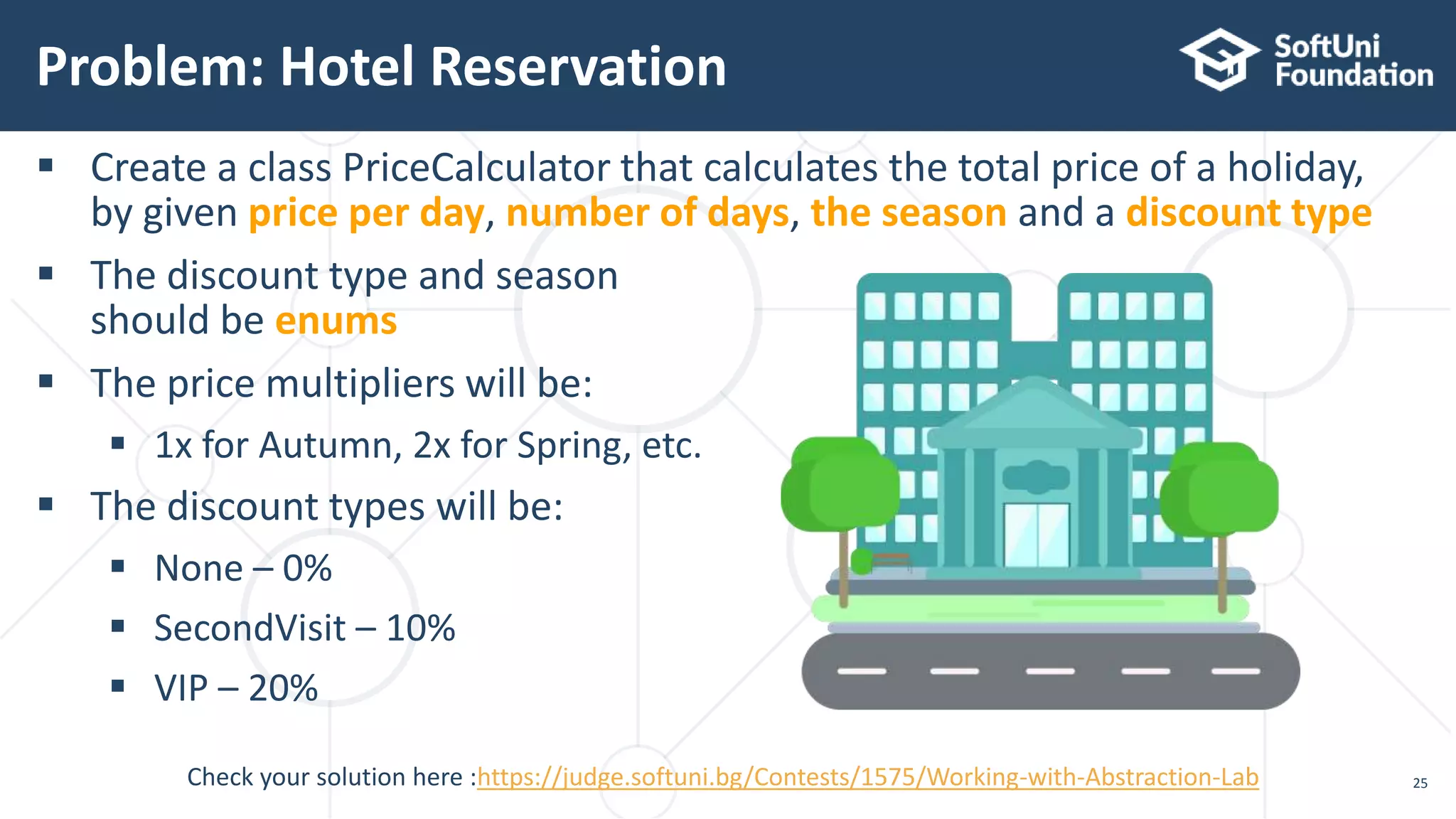
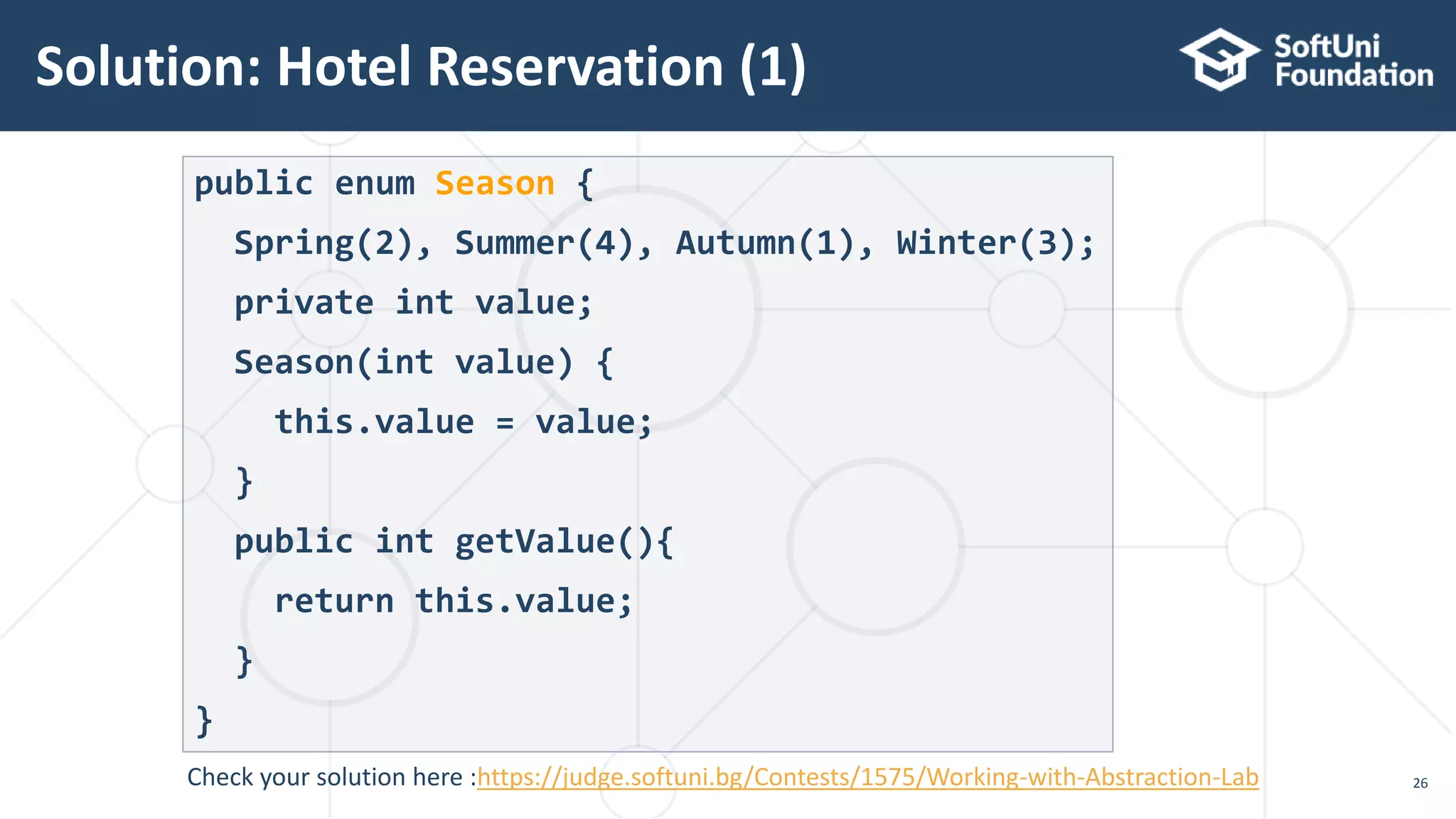
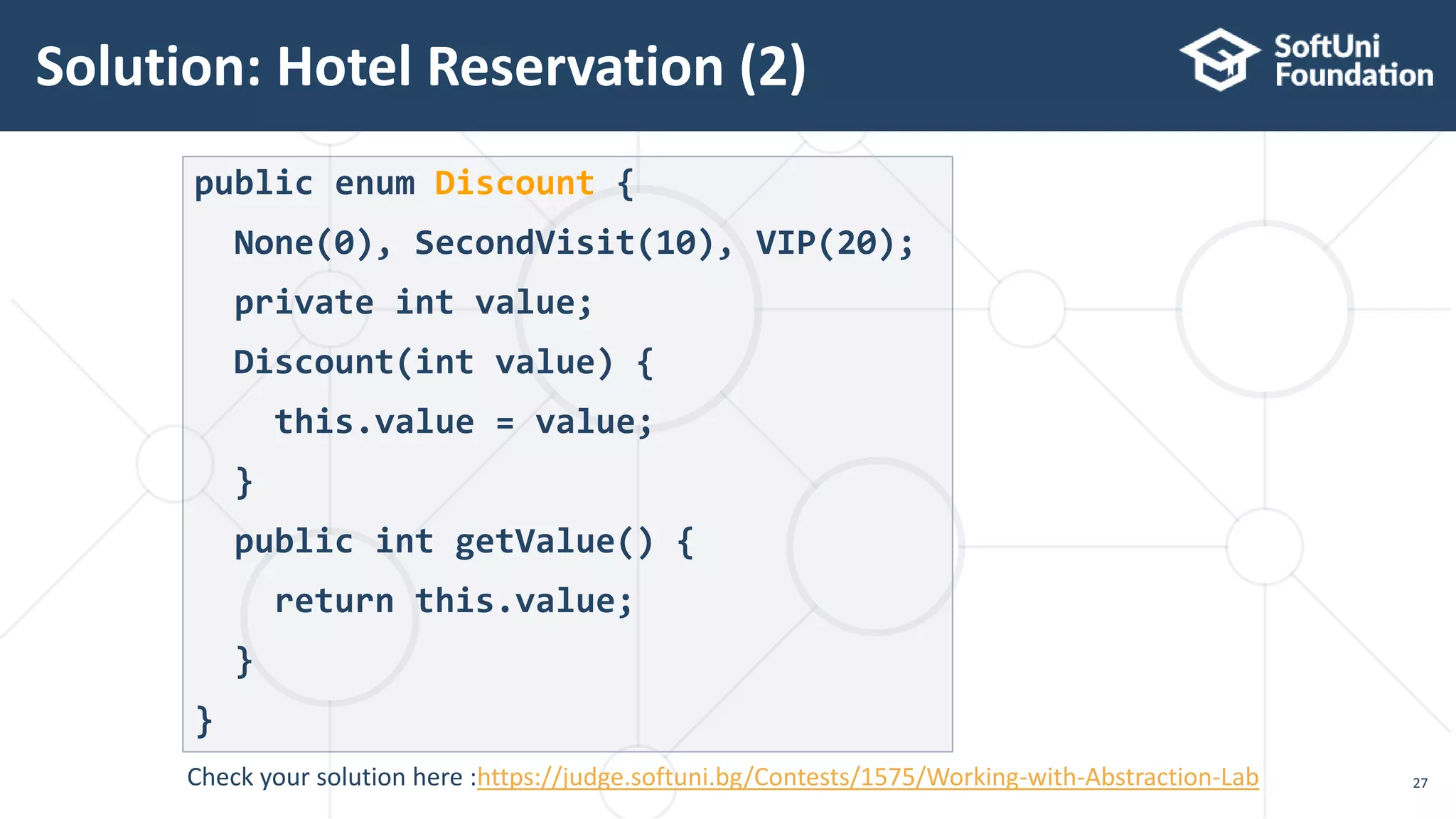
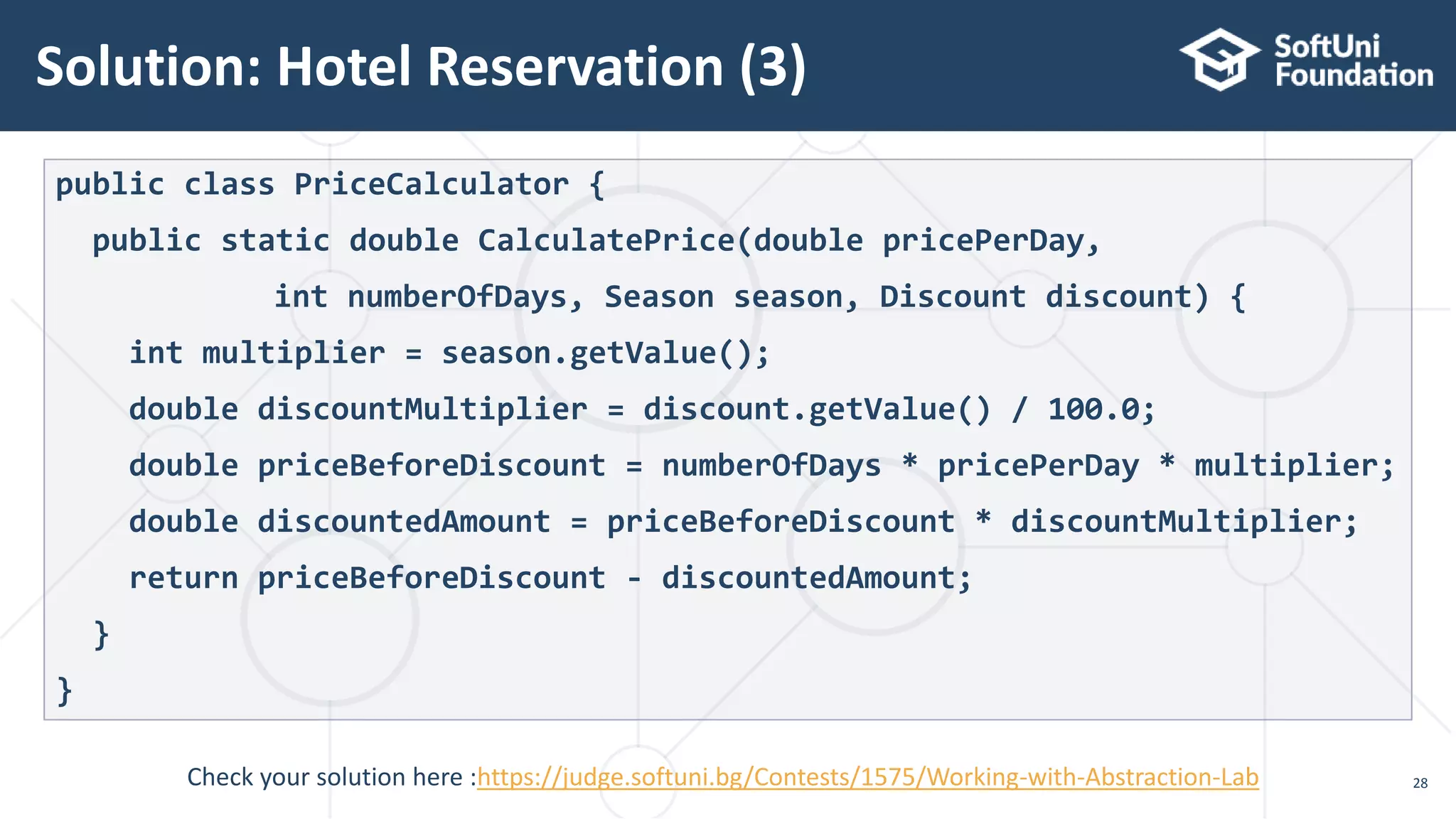
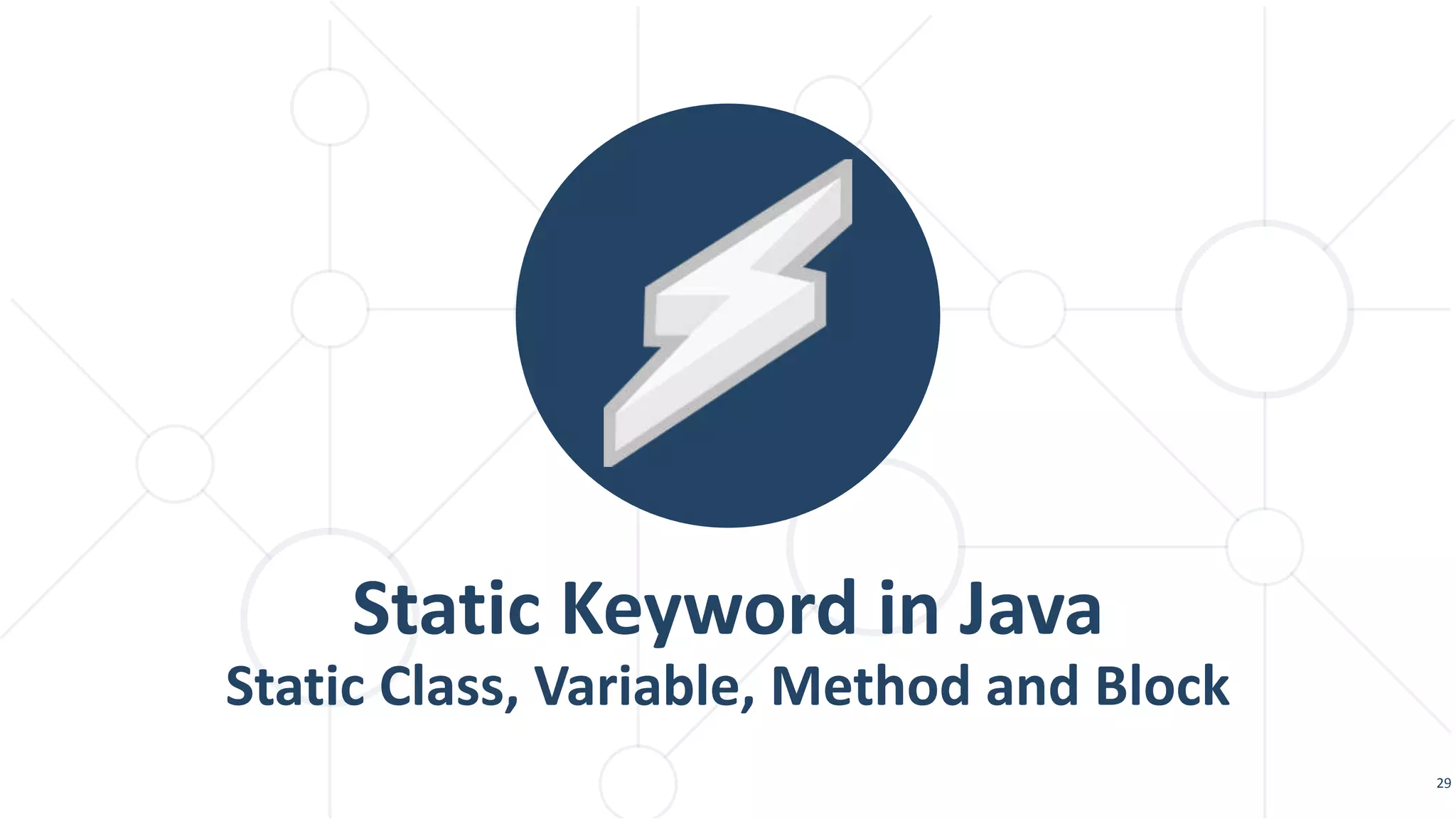
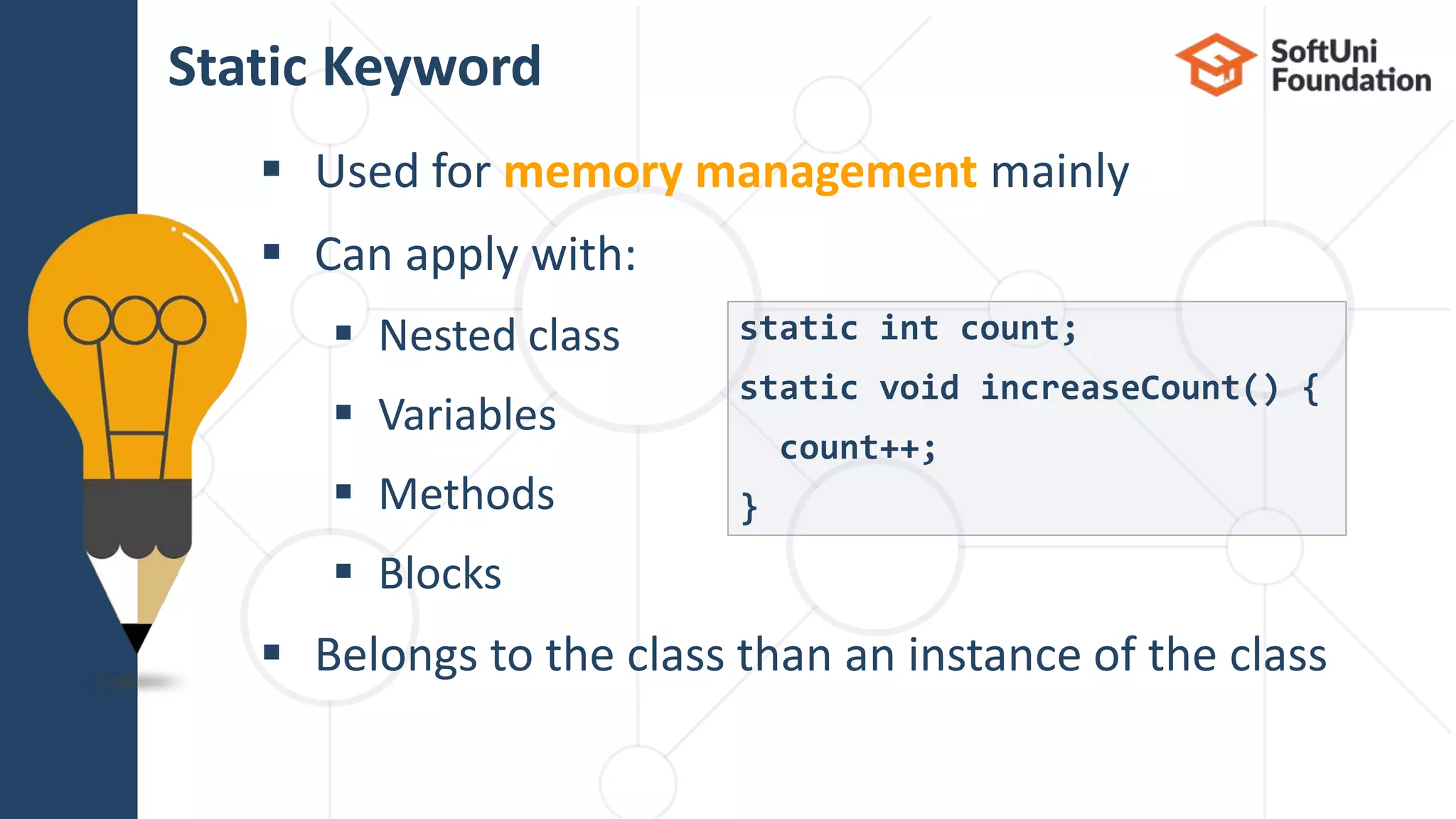
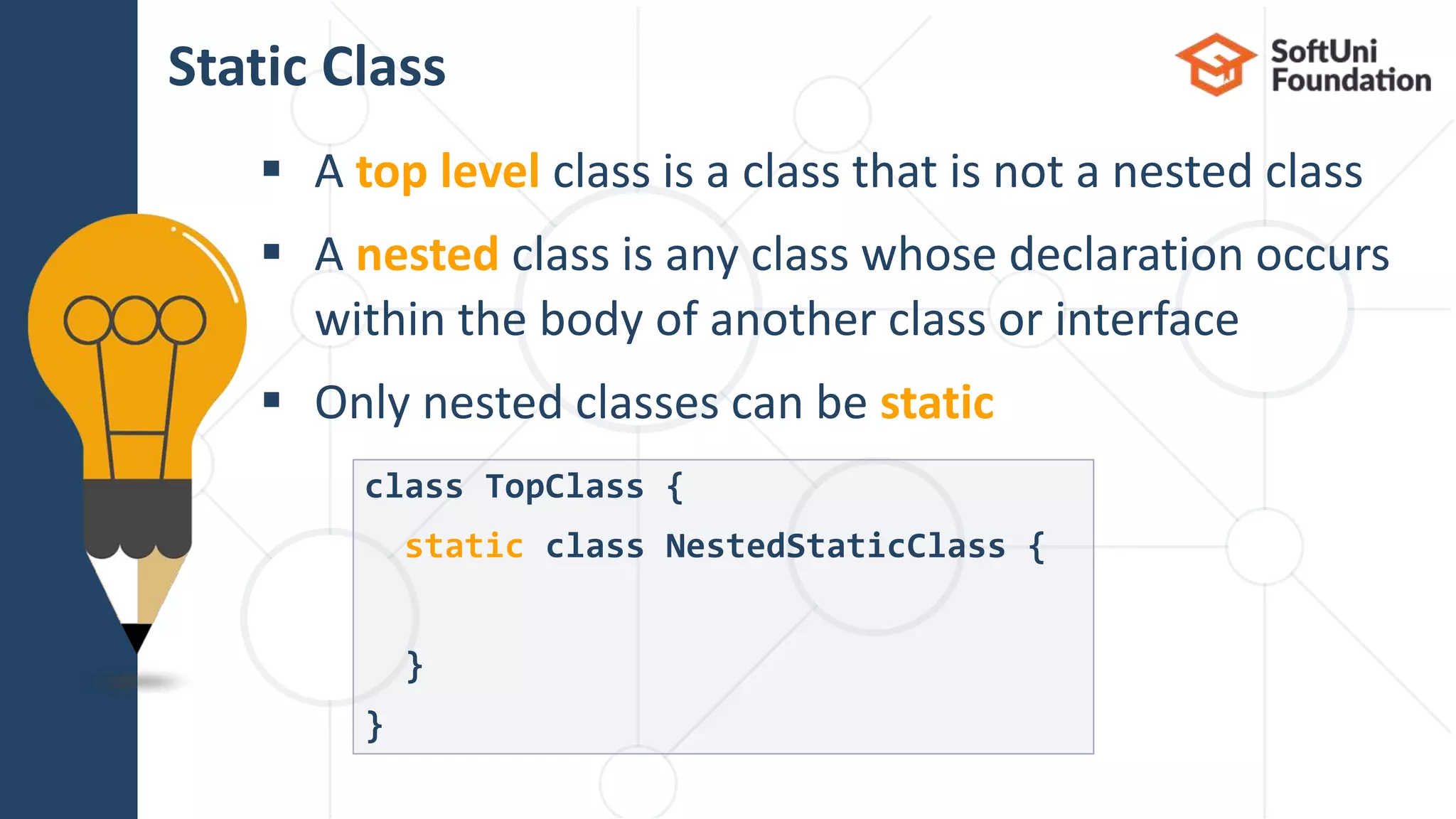
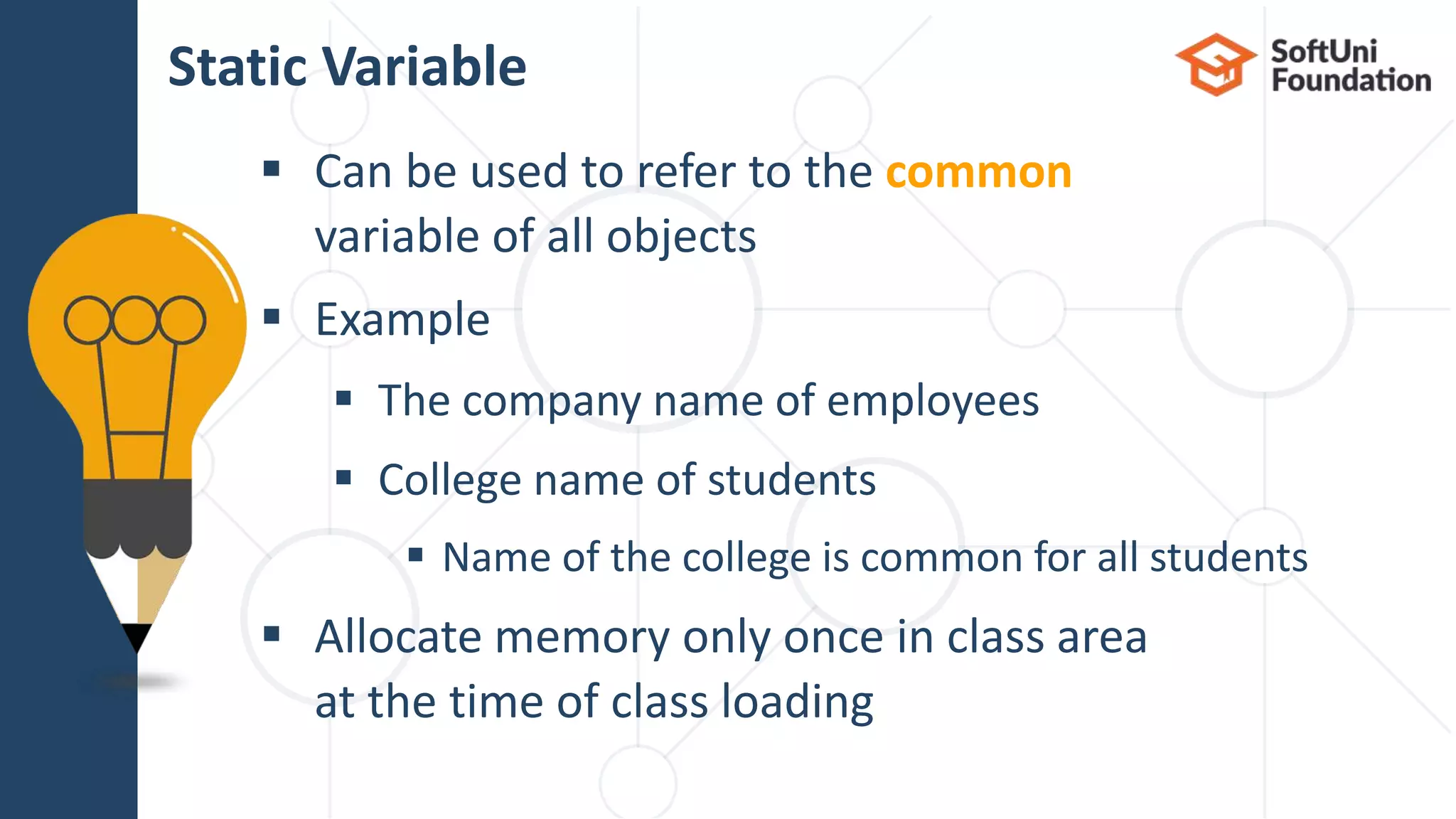

![Example: Static Variable (2) 34 // Inside the Main Class public static void main(String[] args) { Counter c1 = new Counter(); c1.printCounters(); Counter c2 = new Counter(); c2.printCounters(); Counter c3 = new Counter(); c3.printCounters(); int counter = Counter.staticCount; // 3 } Count: 1 Static Count: 1 Count: 1 Static Count: 2 Count: 1 Static Count: 3](https://image.slidesharecdn.com/01-200321145056/75/20-1-Java-working-with-abstraction-34-2048.jpg)

![class Calculate { static int cube(int x) { return x * x * x; } public static void main(String args[]) { int result = Calculate.cube(5); System.out.println(result); // 125 System.out.println(Math.pow(2, 3)); // 8.0 } } Example: Static Method 36](https://image.slidesharecdn.com/01-200321145056/75/20-1-Java-working-with-abstraction-36-2048.jpg)
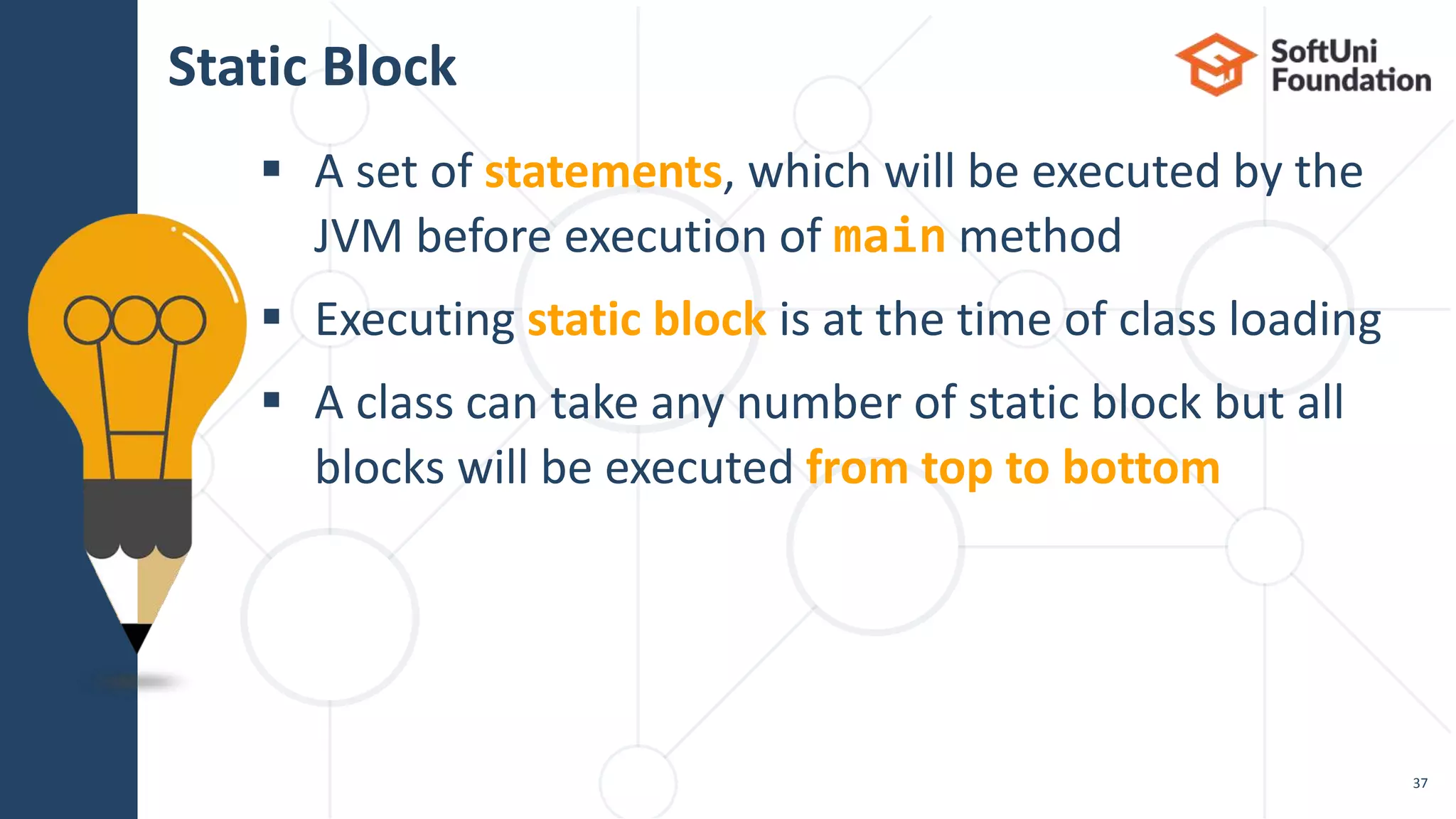
![class Main { static int n; public static void main(String[] args) { System.out.println("From main"); System.out.println(n); } static { System.out.println("From static block"); n = 10; } } Example: Static Block 38 From static block From main 10](https://image.slidesharecdn.com/01-200321145056/75/20-1-Java-working-with-abstraction-38-2048.jpg)



